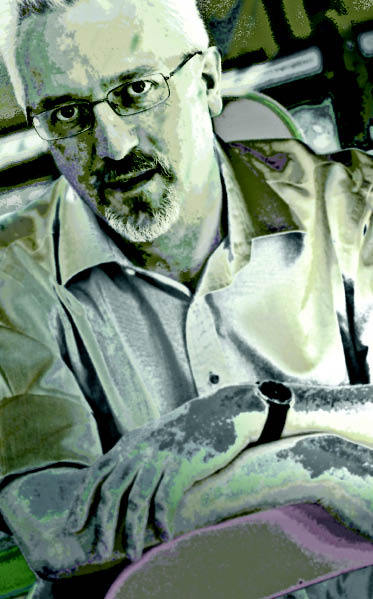Sam Leith tracks the careers of Alan Hollinghurst’s captivating new characters through youthful exuberance to old age, dust and a literary afterlife
It’s quite hard to know where to begin, reviewing The Stranger’s Child. As I finished it, and was heard making bloody-hell-this-is-good noises, two people asked me: ‘What’s it about?’ That, as it turns out, is a very good question.
Ostensibly, it’s about a fictional poet called Cecil Valance, a diffusion-line Rupert Brooke described years after his death in the first world war as ‘a first-rate example of the second-rate poet who enters into common consciousness more deeply than many greater masters’.
Cecil is a Ripping Yarns toff, complete with Victorian country house, flamboyant sodomitical tendencies and membership of the Apostles. The first section of the novel describes his visit in 1913 to his younger Cambridge friend George Sawle’s sub- urban house, Two Acres — an agonising piece of period social comedy. Cecil’s magnetism is apparent, but so too is his youth, his vanity, his essential ridiculousness.
As well as ravishing George, Cecil flirts with his 16-year-old sister Daphne — and when he leaves, he inscribes a poem in her autograph book. The poem, ‘Two Acres’ — a backward-looking piece of Hamadryad-thronged Georgian kitsch — goes on to become very well known (in part, amusingly, because its author adds a stanza or two to retro-fit it as a war poem).
Four subsequent sections — set in the Twenties, the Sixties, the Eighties and in 2008 — pick up the threads: finding familiar characters in new settings, introducing new characters, and unfolding bit by bit the details of the cataclysms that have befallen them in the years between.
In the 1920s, for instance, we find Daphne — apparently having been engaged to Cecil before his death — now unhappily married to Cecil’s war-maddened younger brother Dudley. By the 1960s, the Valance house has become a prep-school (of the sort whose teachers boast ‘antique diplomas, and in one case a medal. Neil McAll was the most exotic, with his Dip. Phys. Ed. (Kuala Lumpur), on the strength of which he taught History and French’). The later sections introduce us to Daphne’s children, and to satellites of the family such as Paul, a bank clerk, whose boss is married to Daphne’s grown-up daughter.
So this is the story of the Sawle and Valance families, and their movements back and forth across the borders between middle and upper class. But it is also the story of a literary afterlife. Its movement is from skin to paper: from youth and physicality and sex to old age and dust and decay. It starts by being about Cecil’s lovers and ends by being about his biographers.
Meandering and loose-ended, punctuated by abrupt and jagged turns of fate, skillfully redolent of life lived forwards, this story is fabulously involving and rich. It’s also very funny, in a dry and forgiving way.
The silky precision of its prose — ‘splintering a brazil nut in the silver jaws of the nutcracker’, Hollinghurst writes at one point — is matched by the mimetic completeness of its fictional world. This is an exercise in realism of a dazzlingly high order: it really does seem to be observed rather than imagined. The touches of extraneous detail are unobtrusive, concrete and exact. Here’s just one such, at a music recital:
Then his gaze dropped to the woman seated in front of him — the clasp of her necklace, the label at the neck of her dress turned out … Anne-Marie Paris London — he read it upside-down. When she twitched her head at a sudden loud chord, the tips of her hair tickled his fingers. She glanced round, apology just ruffled by accusal. A little later she murmured something to her husband, who absorbed it with a tiny tutting nod. Paul had a strange and intense apprehension, for three or four seconds that might have been a long tranced minute, of this unknown woman’s life, that would never cross with his again, and the hypnotic detail of her label showing, which she herself was unaware of.
Yet also, and in a sort of counterpoint to this, The Stranger’s Child is a knowingly literary performance: a descendent of E. M. Forster or Evelyn Waugh by way of A. S. Byatt and the Ian McEwan of Atonement. The epigraph to one section — a skittish quatrain of Edith Sitwell mentioning a ‘Mrs Cow’ — is stitched into the story by a mention of Sitwell and a character being nicknamed ‘Mrs Cow’. The epigraph of another, a Forster line about children dancing on the roof of the fortress of culture, is literalised in a series of rooftop hijinks. Tennyson threads in and out of the story — and is burlesqued in another epigraph, from Mick Imlah, who is also the book’s dedicatee. The appearance of the real-life scholar Jon Stallworthy in a party scene is, I have to guess, some sort of benign in-joke.
I should add that there’s a good deal of sex and sexual misbehaviour in it too. Among the fragments of his verse Cecil recites on his visit to Two Acres is the line ‘Love comes not always in by the front door’ (which the young poet delivers in ‘his most homiletic tone’).
This nicely juvenile double-entendre more than stands up as far as The Stranger’s Child is concerned. In fact, ‘not always’ could read ‘almost never’. The one question mark over Hollinghurst’s fastidious realism is that more or less every male character in the book is presented as either openly, or covertly, or thwartedly homo- sexual. You’d think, in a century-long story of two sprawling families, chance alone would supply the odd stray hetero, but you struggle to find one.
There again, nobody’s suggesting fiction should adopt a quota system, and Hollinghurst’s re-gaying of 20th-century history is nothing so earnest as a corrective. It participates in the novel’s presiding tone of arch humour. That humour is central: softening the book’s melancholy with a wan and, as I say, forgiving sense of the vanity of human wishes.
In the end, the central character in The Stranger’s Child is neither Cecil nor Daphne, but time itself, breaking the threaded dances and the diver’s brilliant bow. There’s a whiff of the Possession-style scholarly page-turner in the closing sections — Cecil’s biographer, with a rival somewhere on the horizon, is truffling after stashes of lost manuscripts and secret letters — but the larger movement of the story is towards entropy. More of the past is always going to be lost than recovered.
Rather than use its scale to produce the weightless afflatus of a family saga, The Stranger’s Child captures as well as anything I’ve read the particular gravity of time passing, and the irrecoverable losses it brings with it. It is an extraordinary achievement.







Comments